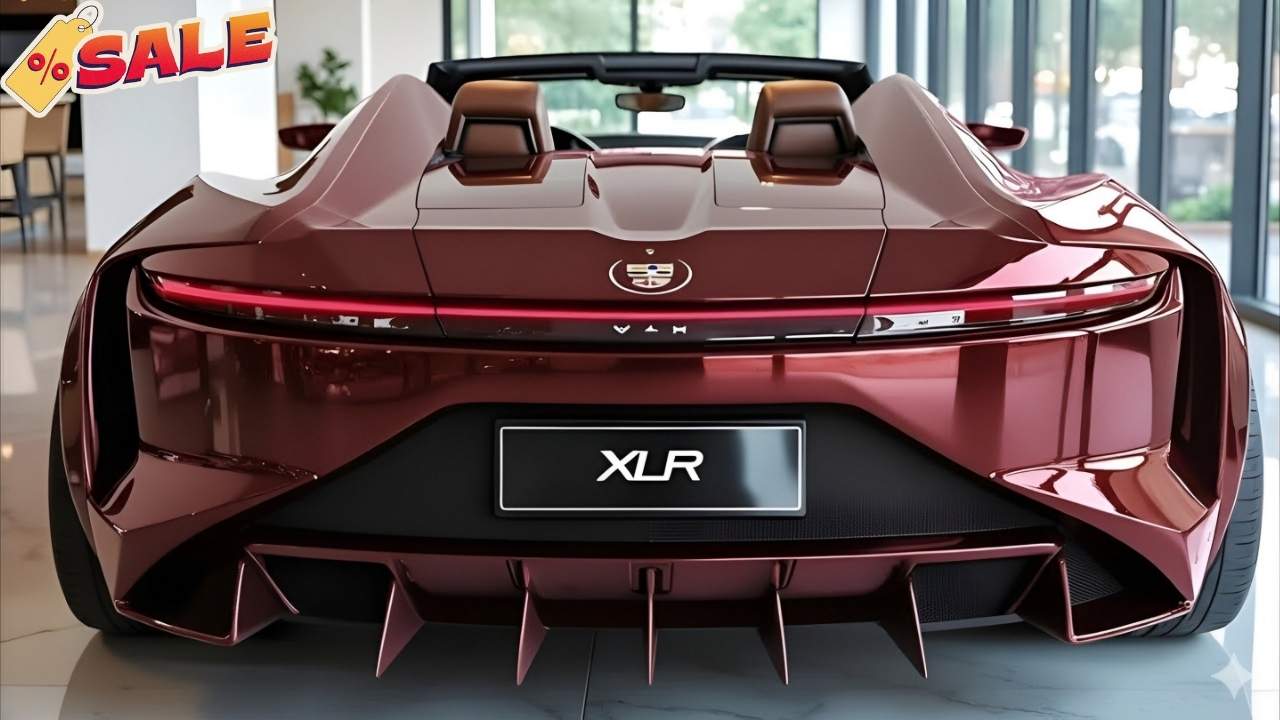Join on WhatsApp
Get the latest updates directly on WhatsApp – motivation, news & more!
The early 2000s weren’t exactly a golden age for American luxury sports cars. Muscle cars were making a comeback, sedans were getting bulkier, and the idea of combining Corvette performance with Cadillac luxury seemed like a stretch. But Cadillac, eager to redefine itself in the 21st century, took a bold swing with the XLR a roadster that was part grand tourer, part tech showcase, and entirely misunderstood in its time. Today, however, the XLR is gaining a second look. And for good reason. Here’s why this unique machine might just be a future collector’s dream.
It Was Cadillac’s Corvette—But Not a Copy
At its core, the Cadillac XLR shared its platform with the sixth-generation Corvette. But this was no badge-engineered clone. Cadillac went to great lengths to make the XLR a distinct product, both in design and philosophy. Where the Corvette was loud, raw, and performance-focused, the XLR was refined, subtle, and high-tech. The body panels were unique. The interior was all Cadillac. And under the hood? Not a small-block V8, but Cadillac’s own Northstar V8.
That engine choice alone set it apart. The 4.6-liter DOHC Northstar made around 320 horsepower and had a smoother, more luxury-oriented character than the pushrod V8 in the ‘Vette. The result was a car that felt fast but composed, planted but poised. It had Corvette DNA but wore a tailored suit instead of racing stripes.
Ahead of Its Time in Tech and Design
For a car that debuted in 2004, the XLR came packed with features that seemed futuristic back then and still feel impressive today. Keyless entry and push-button start were rare in the early 2000s. Adaptive cruise control was nearly unheard of in domestic vehicles. The car also featured a fully electronic dashboard, magnetic ride control suspension, and a retractable hardtop roof all cutting-edge stuff at the time.
Design-wise, the XLR followed Cadillac’s sharp-edged “Art and Science” aesthetic. The angular styling was a clear departure from the brand’s traditional curves and chrome. And while it turned heads, it also divided opinions—something that often happens with cars that later become collectibles.
Today, cars that once seemed “too different” often earn praise for daring to be original. The XLR fits that mold perfectly.
It’s Rare—And Getting Rarer
One thing collectors always look for is rarity. And the XLR delivers. Cadillac only produced around 15,000 units between 2004 and 2009. That’s a small number, especially when compared to the hundreds of thousands of Corvettes made during the same period.
Rarer still are specific trims, like the high-performance XLR-V, which added a supercharged Northstar V8 with 443 horsepower. Fewer than 2,400 of those were built. But even the base XLR is uncommon on the road today. You don’t see them at every car show. You rarely pass one on the street. And that scarcity is part of the appeal.
When it comes to future collectibility, low production numbers combined with distinctive styling and unique engineering usually set the stage for rising interest and values.
It Blended Two Worlds Seamlessly
One of the most compelling things about the XLR is how it straddled two seemingly incompatible categories: American muscle and European-style luxury grand touring. It had the power and presence to hang with performance cars, but the refinement and comfort of a long-distance cruiser.
This dual identity makes it a special kind of car one that doesn’t really exist anymore. Modern Cadillacs have leaned into either full luxury or aggressive performance. The XLR tried to do both. And for a select group of buyers, it did so brilliantly.
That blend also gives the XLR a timeless quality. It’s not tied to the expectations of a traditional sports car or a luxury barge. It exists in its own niche, which might be one reason it still feels fresh two decades after its launch.
It’s Aging Into Appreciation
When the XLR first hit the market, it wasn’t exactly embraced with open arms. Some thought it was too expensive, others thought it wasn’t “Cadillac enough,” and Corvette fans didn’t always get the appeal. But that’s starting to change.
Enthusiasts are beginning to realize that the XLR’s quirks are exactly what make it interesting. It didn’t follow the rules. It didn’t play it safe. And now, it’s one of those rare cars from the 2000s that still looks modern and stands out in a crowd.
Prices for well-maintained examples are holding steady, and in some cases, climbing. Collectors who once overlooked the XLR are now hunting for clean, low-mileage units especially those with rare options or in factory-original condition. And as the years go by, fewer examples will survive, further increasing demand.
Conclusion
The Cadillac XLR was never meant to be an ordinary car. It was a bold experiment, a statement of intent, and a fusion of performance and luxury that no one saw coming. It wasn’t a Corvette, and it wasn’t your grandpa’s Cadillac it was something entirely its own.
That uniqueness, combined with low production numbers, forward-thinking tech, and unmistakable styling, makes the XLR a strong candidate for future collector status. It may have arrived before the world was ready for it, but now, years later, the XLR is finally being seen for what it is: a beautifully flawed, daringly different, and quietly desirable piece of Cadillac history.
If you’re lucky enough to own one or thinking about buying one hold onto it. The Cadillac XLR’s moment is coming. And when it does, it just might become one of the most unexpected collector cars of its generation.



